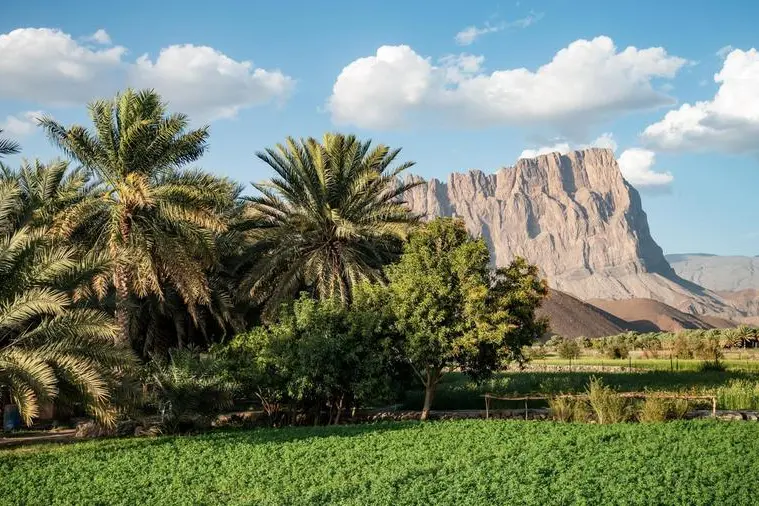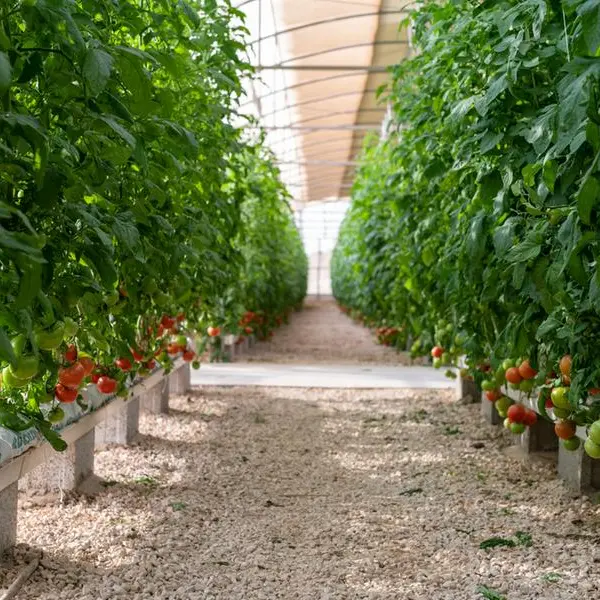PHOTO
Agriculture in Al Hajar Mountains, near Al Ayn, Sultanate of Oman, Arabian Peninsula. Getty Images Image used for illustrative purpose.
Muscat: The cloud seeding campaign in the Sultanate of Oman has resulted in a significant boost to rainfall with the official data confirming that there has been an enhancement of 15 to 18 percent over a period from 2013-18.
Cloud seeding is one of the technologies that the Ministry of Agriculture, Fisheries and Water Resources have relied on to boost the rainfall in Oman, where the annual rainfall is low. It is key to bolstering water and food security, and replenishing groundwater reserves. The success of cloud seeding has raised the groundwater reserves in Oman since the ministry set up its first cloud seeding station in 2013.
The station was established at Mount Al Surat in the Wilayat of Ibri in Al Dhahirah Governorate. Today, there are 12 cloud seeding stations in the Sultanate, including two stations in Dhofar Governorate and 10 stations on Al Hajar Mountains.
Research, studies and statistics reaffirmed the success of cloud seeding in Oman with the technology contributing to enhancement of rainfall during the past years by 15 to 18 percent, according to statistical reports for the years 2013- 2018.
The rainfall data is collected from the rain gauges around the cloud seeding stations in the various governorates. Currently work is underway for installation of a new cloud seeding station in Musandam Governorate.
The cloud seeding centre at the ministry is working on conducting studies and research on the new technologies that could develop the system including the cloud seeding project with drones that would cover large areas where it is difficult to establish the cloud seeding stations.
The ministry is committed to the development of new technologies that would increase rainfall for the benefit of future generations at risk of water shortage. Such efforts strengthen Oman’s prominent role in addressing water sustainability challenges.
Oman’s focus on cloud seeding for the past decade has helped address the country’s typically arid climate, provide additional rainfall to support agriculture and tackle water security concerns.
How cloud seeding works
Seeding is a complex process, with research pouring into the field to assess its effectiveness. But it essentially involves shooting salt flares or other small materials into clouds to try to generate extra rain.
Cloud seeding could yield more water for crops, boost supply and recharge wells.
Another advantage is that seeding is significantly cheaper than desalination. Cloud seeding is simply a way of trying to extract more rain from a cloud.
An operation begins in the early morning with meteorologists monitoring the clouds. Those suitable for seeding are warm clouds or convective clouds technically known as cumilform that have an updraft in the middle.
Fortunately they are the most common type of cloud found in Oman. When these can be seen on radar, pilots are sent to the location and salt flares are fired into the updraft. These particles attract tiny droplets of water and also encourage condensation. The droplets then collide with others, become larger and eventually fall to the ground as rain. The cloud can also become larger due to this activity.























